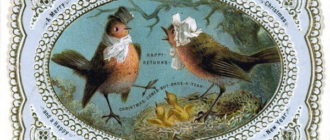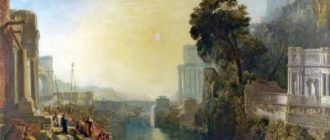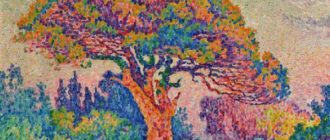
Fresco in the Sistine Chapel by Michelangelo Buonarroti is a symbol of the superiority of the divine world over the earthly
“Painting of the vault of the Sistine Chapel” – a monumental work of the brilliant Italian artist, sculptor and architect Michelangelo Buonarroti is a series of frescoes dedicated to the theme of the salvation of mankind through faith in Jesus Christ. The main content is reflected in the central part of the vault, where nine main plots from the Book of Genesis are placed. The paintings convey biblical revelation from the origin of the world to the flood. The composition includes more than 300 figures and is represented by three groups.
The theme of the first is the creation of the Universe with innumerable luminaries and the earthly space. The second is the history of the first people (Adam and Eve): the creation of man, his original sin and expulsion from Paradise. The third is the difficulties that have fallen to the human lot. The groups are arranged according to the laws of a medieval triptych, where the panel located in the center tells about the largest event, and the surrounding images complement the content.

Next to the dramatic biblical scenes, ten ceremonial shields are written; they contain compositions illustrating sacred texts. On the sails of the vaults on both sides and at the ends of the temple, the author placed the largest heroes: twelve characters, symbolically personifying the premonition of future salvation. The artist sought to highlight in their images the titanic power and moral perfection. The names of the seven prophets of Israel, who proclaimed the will of God, and the five sibyls of the Ancient World can be read on the tablets under the pedestals.
In the four corners of the room, on the curved strips of the ceiling, the master presented stories about the salvation of the Israeli people. The motifs depicted on the frescoes give the entire world community ideas about the faith of the people of that time, about their outstanding talent and moral development.

Title of the work: “Painting of the vault of the Sistine Chapel” (Volta della Cappella Sistina).
Author: Michelangelo di Lodovico di Leonardo di Buonarroti Simoni (1475-1564).
Year of writing: 1508-1512
Size: 4093 x 1341 cm.
Style: Renaissance.
Genre: Religious.
Technique: Affresco.
Material: Raw plaster.
Location: Sistine Chapel, Vatican.
Michelangelo was not only an outstanding artist of the XV-XVI centuries
He lived a long life and left behind a rich creative heritage, but he believed that all his works were not worthy of God. In 1508, Pope Julius II invited Buonarroti to Rome to work on an expensive and ambitious art project. The master was not familiar enough with the technique of fresco painting. He sought help from familiar Florentine colleagues, who taught him the basic techniques. Later, not allowing anyone into the room, the genius alone created a masterpiece. It was exhausting work, as more than 600 square meters of surface had to be painted, either with the head thrown back or lying on the back.

The most popular fragment is “The Creation of Adam”, where God and Adam stretch out their hands to each other. This gesture has a strong emotional impact on the audience, excites feelings and thoughts. The researchers note the similarity of the drawing of God’s cloak with the contours of the human brain. Thus, the author conveyed the idea that the evidence of the existence of the Supreme and the spiritual world is hidden within a person. In this context, it can be assumed that the fresco “The Creation of Adam” is not about the birth of a human son as a biological being, but about his emergence as an independent rational person. And God is not just a creator who gives life and unearthly blessings, but the energy of joy and creativity, without which a person would not be able to enter into continuous communication with the Almighty.

The artistic painting on the ceiling of the Sistine Chapel has been repeatedly restored. The last restoration of the masterpiece, which lasted from 1980 to 1994, helped to reveal unusual colors and details that had been invisible for several centuries. The revealed facts had a strong influence on art lovers and historians, and caused conflicting reviews.
The fresco “Painting of the vault of the Sistine Chapel” by Michelangelo is a work endowed with colossal spiritual energy. The work demonstrates the extraordinary richness of the most complex scenes, permeated with the powerful dynamics of the characters, their gestures, postures, angles.






